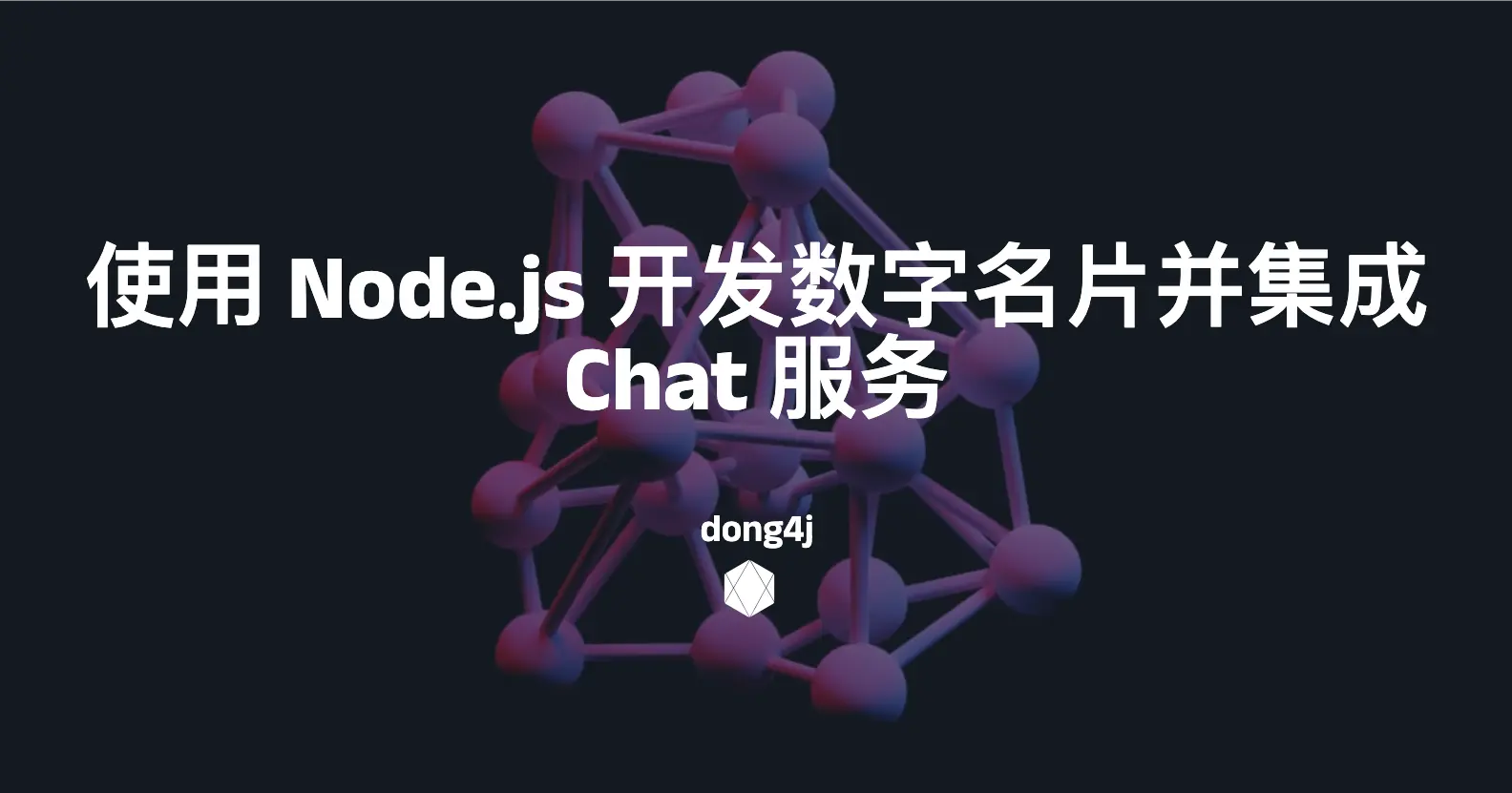Java 集合
Collection
List
LinkedList
ArrayList
CopyOnWriteArrayList
Vetor
Set
HashSet
LinkedHashSet
TreeSet
CopyOnWriteArraySet
Map
ConcurrentHashMap
ConcurrentShipListMap
EnumMap
HashMap
HashTable
LinkedHashMap
Properties
TreeMap
WeakHashMap
单线程集合 List ArrayList
底层基于泛型数组
它允许所有元素,包括 null
ArrayList 实际上是通过一个数组去保存数据的。当我们构造 ArrayList 时;若使用默认构造函数,则 ArrayList 的默认容量大小是 10。
当 ArrayList 容量不足以容纳全部元素时,ArrayList 会重新设置容量:新的容量 =“(原始容量 x3)/2 + 1”。
ArrayList 的克隆函数,即是将全部元素克隆到一个数组中。
ArrayList 实现 java.io.Serializable 的方式。当写入到输出流时,先写入“容量”,再依次写入“每一个元素”;当读出输入流时,先读取“容量”,再依次读取“每一个元素”。
遍历方式 使用迭代器遍历
1 2 3 4 5 Integer value = null ;Iterator iter = list.iterator();while (iter.hasNext()) { value = (Integer)iter.next(); }
使用 RandomAccess 提供的 get()方法遍历 ( 最快)
1 2 3 4 5 Integer value = null ;int size = list.size();for (int i=0 ; i<size; i++) { value = (Integer)list.get(i); }
foreach
1 2 3 4 Integer value = null ;for (Integer integ:list) { value = integ; }
LinkedList
LinkedList 是一个继承于 AbstractSequentialList 的双向链表。它也可以被当作堆栈、队列或双端队列进行操作。
LinkedList 实现 List 接口,能对它进行队列操作。
LinkedList 实现 Deque 接口,即能将 LinkedList 当作双端队列使用。
LinkedList 实现了 Cloneable 接口,即覆盖了函数 clone(),能克隆。
LinkedList 实现 java.io.Serializable 接口,这意味着 LinkedList 支持序列化,能通过序列化去传输。
LinkedList 是非同步的。
遍历方式 1 2 3 4 5 6 7 8 9 10 11 12 13 14 15 16 17 18 19 20 21 22 23 24 25 26 27 28 29 30 31 32 33 34 35 36 37 38 39 40 41 42 43 44 45 46 47 48 49 50 51 52 53 54 55 56 57 58 59 60 61 62 63 64 65 66 67 68 69 70 71 72 73 74 75 76 77 78 79 80 81 82 83 84 85 86 87 88 89 90 91 92 93 94 95 96 97 98 99 100 101 102 103 104 105 106 107 108 109 110 111 112 113 114 115 116 117 118 119 120 121 122 123 124 125 126 127 128 129 130 131 132 133 134 135 136 137 138 139 140 141 142 143 144 145 146 147 148 149 150 151 152 153 154 155 156 157 158 159 160 161 162 163 164 165 166 167 168 169 170 171 172 173 174 175 176 177 import java.util.List;import java.util.Iterator;import java.util.LinkedList;import java.util.NoSuchElementException;public class LinkedListThruTest { public static void main (String[] args) { iteratorLinkedListThruIterator(getLinkedList()) ; iteratorLinkedListThruForeach(getLinkedList()) ; iteratorThroughFor2(getLinkedList()) ; iteratorThroughPollFirst(getLinkedList()) ; iteratorThroughPollLast(getLinkedList()) ; iteratorThroughRemoveFirst(getLinkedList()) ; iteratorThroughRemoveLast(getLinkedList()) ; } private static LinkedList getLinkedList () { LinkedList llist = new LinkedList (); for (int i=0 ; i<100000 ; i++) llist.addLast(i); return llist; } private static void iteratorLinkedListThruIterator (LinkedList<Integer> list) { if (list == null ) return ; long start = System.currentTimeMillis(); for (Iterator iter = list.iterator(); iter.hasNext();) iter.next(); long end = System.currentTimeMillis(); long interval = end - start; System.out.println("iteratorLinkedListThruIterator:" + interval+" ms" ); } private static void iteratorLinkedListThruForeach (LinkedList<Integer> list) { if (list == null ) return ; long start = System.currentTimeMillis(); int size = list.size(); for (int i=0 ; i<size; i++) { list.get(i); } long end = System.currentTimeMillis(); long interval = end - start; System.out.println("iteratorLinkedListThruForeach:" + interval+" ms" ); } private static void iteratorThroughFor2 (LinkedList<Integer> list) { if (list == null ) return ; long start = System.currentTimeMillis(); for (Integer integ:list) ; long end = System.currentTimeMillis(); long interval = end - start; System.out.println("iteratorThroughFor2:" + interval+" ms" ); } private static void iteratorThroughPollFirst (LinkedList<Integer> list) { if (list == null ) return ; long start = System.currentTimeMillis(); while (list.pollFirst() != null ) ; long end = System.currentTimeMillis(); long interval = end - start; System.out.println("iteratorThroughPollFirst:" + interval+" ms" ); } private static void iteratorThroughPollLast (LinkedList<Integer> list) { if (list == null ) return ; long start = System.currentTimeMillis(); while (list.pollLast() != null ) ; long end = System.currentTimeMillis(); long interval = end - start; System.out.println("iteratorThroughPollLast:" + interval+" ms" ); } private static void iteratorThroughRemoveFirst (LinkedList<Integer> list) { if (list == null ) return ; long start = System.currentTimeMillis(); try { while (list.removeFirst() != null ) ; } catch (NoSuchElementException e) { } long end = System.currentTimeMillis(); long interval = end - start; System.out.println("iteratorThroughRemoveFirst:" + interval+" ms" ); } private static void iteratorThroughRemoveLast (LinkedList<Integer> list) { if (list == null ) return ; long start = System.currentTimeMillis(); try { while (list.removeLast() != null ) ; } catch (NoSuchElementException e) { } long end = System.currentTimeMillis(); long interval = end - start; System.out.println("iteratorThroughRemoveLast:" + interval+" ms" ); } }
返回结果
1 2 3 4 5 6 7 iteratorLinkedListThruIterator:8 ms iteratorLinkedListThruForeach:3724 ms iteratorThroughFor2:5 ms iteratorThroughPollFirst:8 ms iteratorThroughPollLast:6 ms iteratorThroughRemoveFirst:2 ms iteratorThroughRemoveLast:2 ms
采用 ArrayList 对随机访问比较快,而 for 循环中的 get() 方法,采用的即是随机访问的方法,因此在 ArrayList 里,for 循环较快
采用 LinkedList 则是顺序访问比较快,iterator 中的 next() 方法,采用的即是顺序访问的方法,因此在 LinkedList 里,使用 iterator 较快
从数据结构角度分析,for 循环适合访问顺序结构, 可以根据下标快速获取指定元素. 而 Iterator 适合访问链式结构, 因为迭代器是通过 next()和 Pre()
Vector
线程安全
Vector 实际上是通过一个数组去保存数据的。当我们构造 Vecotr 时;若使用默认构造函数,则 Vector 的默认容量大小是 10。
当 Vector 容量不足以容纳全部元素时,Vector 的容量会增加。若容量增加系数 >0,则将容量的值增加“容量增加系数”;否则,将容量大小增加一倍。
Vector 的克隆函数,即是将全部元素克隆到一个数组中。
遍历方式 1 2 3 4 5 6 7 8 9 10 11 12 13 14 15 16 17 18 19 20 21 22 23 24 25 26 27 28 29 30 31 32 33 34 35 36 37 38 39 40 41 42 43 44 45 46 47 48 49 50 51 52 53 54 55 56 57 58 59 60 61 62 63 64 65 66 67 68 69 70 71 72 73 74 75 76 77 78 79 80 81 import java.util.*;public class VectorRandomAccessTest { public static void main (String[] args) { Vector vec= new Vector (); for (int i=0 ; i<100000 ; i++) vec.add(i); iteratorThroughRandomAccess(vec) ; iteratorThroughIterator(vec) ; iteratorThroughFor2(vec) ; iteratorThroughEnumeration(vec) ; } private static void isRandomAccessSupported (List list) { if (list instanceof RandomAccess) { System.out.println("RandomAccess implemented!" ); } else { System.out.println("RandomAccess not implemented!" ); } } public static void iteratorThroughRandomAccess (List list) { long startTime; long endTime; startTime = System.currentTimeMillis(); for (int i=0 ; i<list.size(); i++) { list.get(i); } endTime = System.currentTimeMillis(); long interval = endTime - startTime; System.out.println("iteratorThroughRandomAccess:" + interval+" ms" ); } public static void iteratorThroughIterator (List list) { long startTime; long endTime; startTime = System.currentTimeMillis(); for (Iterator iter = list.iterator(); iter.hasNext();) { iter.next(); } endTime = System.currentTimeMillis(); long interval = endTime - startTime; System.out.println("iteratorThroughIterator:" + interval+" ms" ); } public static void iteratorThroughFor2 (List list) { long startTime; long endTime; startTime = System.currentTimeMillis(); for (Object obj:list) ; endTime = System.currentTimeMillis(); long interval = endTime - startTime; System.out.println("iteratorThroughFor2:" + interval+" ms" ); } public static void iteratorThroughEnumeration (Vector vec) { long startTime; long endTime; startTime = System.currentTimeMillis(); for (Enumeration enu = vec.elements(); enu.hasMoreElements();) { enu.nextElement(); } endTime = System.currentTimeMillis(); long interval = endTime - startTime; System.out.println("iteratorThroughEnumeration:" + interval+" ms" ); } }
返回结果
1 2 3 4 iteratorThroughRandomAccess:6 ms iteratorThroughIterator:9 ms iteratorThroughFor2:8 ms iteratorThroughEnumeration:7 ms
List 总结
List 是一个接口,它继承于 Collection 的接口。它代表着有序的队列。
AbstractList 是一个抽象类,它继承于 AbstractCollection。AbstractList 实现 List 接口中除 size()、get(int location) 之外的函数。
AbstractSequentialList 是一个抽象类,它继承于 AbstractList。AbstractSequentialList 实现了“链表中,根据 index 索引值操作链表的全部函数”。
ArrayList, LinkedList, Vector, Stack 是 List 的 4 个实现类。
ArrayList 是一个数组队列,相当于动态数组。它由数组实现,随机访问效率高,随机插入、随机删除效率低。
LinkedList 是一个双向链表。它也可以被当作堆栈、队列或双端队列进行操作。LinkedList 随机访问效率低,但随机插入、随机删除效率低。
Vector 是矢量队列,和 ArrayList 一样,它也是一个动态数组,由数组实现。但是 ArrayList 是非线程安全的,而 Vector 是线程安全的。
Stack 是栈,它继承于 Vector。它的特性是:先进后出 (FILO, First In Last Out)。
使用特点 如果涉及到“栈”、“队列”、“链表”等操作,应该考虑用 List,具体的选择哪个 List,根据下面的标准来取舍。
对于需要快速插入,删除元素,应该使用 LinkedList。
对于需要快速随机访问元素,应该使用 ArrayList。
对于“单线程环境” 或者 “多线程环境,但 List 仅仅只会被单个线程操作”,此时应该使用非同步的类 (如 ArrayList)。
对于“多线程环境,且 List 可能同时被多个线程操作”,此时,应该使用同步的类 (如 Vector)。
ArrayList 和 LinkedList 比较 LinkedList 中插入元素很快,而 ArrayList 中插入元素很慢!
LinkedList: 通过 add(int index, E element) 向 LinkedList 插入元素时。先是在双向链表中找到要插入节点的位置 index;找到之后,再插入一个新节点。
ArrayList: ensureCapacity(size+1) 的作用是“确认 ArrayList 的容量,若容量不够,则增加容量。”
System.arraycopy(elementData, index, elementData, index + 1, size - index); 会移动 index 之后所有元素即可。这就意味着,ArrayList 的 add(int
LinkedList 中随机访问很慢,而 ArrayList 中随机访问很快
LinkedList: 通过 get(int index) 获取 LinkedList 第 index 个元素时。先是在双向链表中找到要 index 位置的元素;找到之后再返回。
ArrayList: 通过 get(int index) 获取 ArrayList 第 index 个元素时。直接返回数组中 index 位置的元素,而不需要像 LinkedList 一样进行查找。
Vector 和 ArrayList 比较 相同之处:
它们都继承于 AbstractList,并且实现 List 接口。
1 2 3 4 5 6 7 8 9 10 11 12 13 14 15 16 17 18 19 20 21 22 23 24 25 26 27 28 29 30 31 32 33 34 35 36 37 38 39 40 41 42 43 44 45 46 47 48 49 50 51 52 53 54 55 56 57 58 59 60 61 62 63 64 65 66 67 68 69 70 71 72 73 74 75 76 77 78 79 80 81 82 83 84 85 86 87 88 89 90 91 92 93 94 95 96 97 98 99 100 101 102 103 104 105 106 107 108 109 110 111 112 113 114 115 116 117 118 119 120 121 122 123 124 125 126 127 128 129 130 131 132 133 134 135 136 137 138 139 140 141 142 143 144 145 146 147 148 149 150 151 152 153 154 155 156 157 158 159 160 161 162 163 164 165 166 167 168 169 170 171 172 173 174 175 176 177 178 179 180 181 182 183 184 185 186 187 188 189 190 191 192 193 194 195 196 197 198 199 200 201 202 203 204 205 206 207 208 209 210 211 212 213 214 215 216 217 218 219 220 221 222 223 224 225 226 227 228 229 230 231 232 233 234 235 236 237 238 239 240 241 242 243 244 245 246 247 248 249 250 251 252 253 254 255 256 257 258 259 260 261 262 263 264 265 266 267 268 269 270 271 272 273 274 275 276 277 278 279 280 281 282 283 284 285 286 287 288 289 290 291 292 293 294 295 296 297 298 299 300 301 302 303 304 305 306 307 308 309 310 311 312 313 314 315 316 317 318 319 320 321 322 323 324 325 326 327 328 329 330 331 332 333 334 335 336 337 338 339 340 341 342 343 344 345 346 347 348 349 350 351 352 353 354 355 356 357 358 359 360 361 362 363 364 365 366 367 368 369 370 371 372 373 374 375 376 377 378 379 380 381 382 383 384 385 386 387 388 389 390 391 392 393 394 395 396 397 398 399 400 401 402 403 404 405 406 407 408 409 410 411 412 413 414 415 416 417 418 419 420 421 422 423 424 425 426 427 428 429 430 431 432 433 434 435 436 437 438 439 440 441 442 443 444 445 446 447 448 449 450 451 452 453 454 455 456 457 458 459 460 461 462 463 464 465 466 467 468 469 470 471 472 473 474 475 476 477 478 479 480 481 482 483 484 485 486 487 488 489 490 491 492 493 494 495 496 497 498 499 500 501 502 503 504 505 506 507 508 509 510 511 512 513 514 515 516 517 518 519 520 521 522 523 524 525 526 527 528 529 530 531 532 533 534 535 536 537 538 539 540 541 542 543 544 545 546 547 548 549 550 551 552 553 554 555 556 557 558 559 560 561 562 563 564 565 566 567 568 569 570 571 572 573 574 575 576 577 578 579 580 581 582 583 584 585 586 587 588 589 590 591 592 593 594 595 596 597 598 599 600 601 602 603 604 605 606 607 608 609 610 611 612 613 614 615 616 617 618 619 620 621 622 623 624 625 626 627 628 629 630 631 632 633 634 635 636 637 638 639 640 641 642 643 644 645 646 647 648 649 650 651 652 653 654 655 656 657 658 659 660 661 662 663 664 665 666 667 668 669 670 671 672 673 674 675 676 677 678 679 680 681 682 683 684 685 686 687 688 689 690 691 692 693 694 695 696 697 698 699 700 701 702 703 704 705 706 707 708 709 710 711 712 713 714 715 716 717 718 719 720 721 722 723 724 725 726 727 728 729 730 731 732 733 734 735 736 737 738 739 740 741 742 743 744 745 746 747 748 749 750 751 752 753 754 755 756 757 758 759 760 761 762 763 764 765 766 767 768 769 770 771 772 773 774 775 776 777 778 779 780 781 782 783 784 785 786 787 788 789 790 791 792 793 794 795 796 797 798 799 800 801 802 803 804 805 806 807 808 809 810 811 812 813 814 815 816 817 818 819 820 821 822 823 824 825 826 827 828 829 830 831 832 833 834 835 836 837 838 839 840 841 842 public class ArrayList <E> extends AbstractList <E>implements List <E>, RandomAccess, Cloneable, java.io.Serializablepublic class Vector <E> extends AbstractList <E>implements List <E>, RandomAccess, Cloneable, java.io.Serializable {}```` - 它们都实现了 RandomAccess 和 Cloneable 接口 - 它们都是通过数组实现的,本质上都是动态数组 - 它们的默认数组容量是 10 - 它们都支持 Iterator 和 listIterator 遍历 不同之处: - 线程安全性不一样,ArrayList 适用于单线程,Vector 适用于多线程 - 构造函数个数不同 - 容量增加方式不同 - 逐个添加元素时,若 ArrayList 容量不足时,“新的容量”=“(原始容量 x3)/2 + 1 ”。 - Vector - 增长系数 > 0 时 :“新的容量”=“原始容量 + 增长系数” - 增长系数 <= 0 时: “新的容量”=“原始容量 x 2 ” - 对 Enumeration 的支持不同。Vector 支持通过 Enumeration 去遍历,而 List 不支持 ### Map - Map 是映射接口,Map 中存储的内容是键值对 (key-value)。 - AbstractMap 是继承于 Map 的抽象类,它实现了 Map 中的大部分 API。其它 Map 的实现类可以通过继承 AbstractMap 来减少重复编码。 - SortedMap 是继承于 Map 的接口。SortedMap 中的内容是排序的键值对,排序的方法是通过比较器 (Comparator)。 - NavigableMap 是继承于 SortedMap 的接口。相比于 SortedMap,NavigableMap 有一系列的导航方法;如"获取大于/等于某对象的键值对" 、“获取小于 / 等于某对象的键值对”等等。 - TreeMap 继承于 AbstractMap,且实现了 NavigableMap 接口;因此,TreeMap 中的内容是“有序的键值对”! - HashMap 继承于 AbstractMap,但没实现 NavigableMap 接口;因此,HashMap 的内容是“键值对,但不保证次序”! - Hashtable 虽然不是继承于 AbstractMap,但它继承于 Dictionary(Dictionary 也是键值对的接口),而且也实现 Map 接口;因此,Hashtable 的内容也是“键值对,也不保证次序”。但和 HashMap 相比,Hashtable 是线程安全的,而且它支持通过 Enumeration 去遍历。 - WeakHashMap 继承于 AbstractMap。它和 HashMap 的键类型不同,WeakHashMap 的键是“弱键”。 在 JDK1.6 中, 新添加的节点是放在头节点, JDK1.8 则是放在尾节点的 JDK1.8 中, 如果链表足够大时, 将自动转换成红黑树保存 #### API ```java abstract void clear () abstract boolean containsKey (Object key) abstract boolean containsValue (Object value) abstract Set<Entry<K, V>> entrySet () abstract boolean equals (Object object) abstract V get (Object key) abstract int hashCode () abstract boolean isEmpty () abstract Set<K> keySet () abstract V put (K key, V value) abstract void putAll (Map<? extends K, ? extends V> map) abstract V remove (Object key) abstract int size () abstract Collection<V> values () ```` 说明: - Map 提供接口分别用于返回 键集、值集或键 - 值映射关系集。 - entrySet() 用于返回键 - 值集的 Set 集合 - keySet() 用于返回键集的 Set 集合 - values() 用户返回值集的 Collection 集合 - 因为 Map 中不能包含重复的键;每个键最多只能映射到一个值。所以,键 - 值集、键集都是 Set,值集时 Collection。 - Map 提供了“键 - 值对”、“根据键获取值”、“删除键”、“获取容量大小”等方法。 #### HashMap HashMap 是一个散列表,它存储的内容是键值对 (key-value) 映射。 HashMap 继承于 AbstractMap,实现了 Map、Cloneable、java.io.Serializable 接口。 HashMap 的实现不是同步的,这意味着它不是线程安全的。它的 key、value 都可以为 null 。此外,HashMap 中的映射不是有序的。 HashMap 的实例有两个参数影响其性能:“初始容量” 和 “加载因子”。容量 是哈希表中桶的数量,初始容量 只是哈希表在创建时的容量。加载因子 是哈希表在其容量自动增加之前可以达到多满的一种尺度。当哈希表中的条目数超出了加载因子与当前容量的乘积时,则要对该哈希表进行 rehash 操作(即重建内部数据结构),从而哈希表将具有大约两倍的桶数。 通常,默认加载因子是 0.75 , 这是在时间和空间成本上寻求一种折衷。加载因子过高虽然减少了空间开销,但同时也增加了查询成本(在大多数 HashMap 类的操作中,包括 get 和 put 操作,都反映了这一点)。在设置初始容量时应该考虑到映射中所需的条目数及其加载因子,以便最大限度地减少 rehash 操作次数。如果初始容量大于最大条目数除以加载因子,则不会发生 rehash 操作。  { if (initialCapacity < 0 ) throw new IllegalArgumentException ("Illegal initial capacity: " + initialCapacity); if (initialCapacity > MAXIMUM_CAPACITY) initialCapacity = MAXIMUM_CAPACITY; if (loadFactor <= 0 || Float.isNaN(loadFactor)) throw new IllegalArgumentException ("Illegal load factor: " + loadFactor); int capacity = 1 ; while (capacity < initialCapacity) capacity <<= 1 ; this .loadFactor = loadFactor; threshold = (int )(capacity * loadFactor); table = new Entry [capacity]; init(); } public HashMap (int initialCapacity) { this (initialCapacity, DEFAULT_LOAD_FACTOR); } public HashMap () { this .loadFactor = DEFAULT_LOAD_FACTOR; threshold = (int )(DEFAULT_INITIAL_CAPACITY * DEFAULT_LOAD_FACTOR); table = new Entry [DEFAULT_INITIAL_CAPACITY]; init(); } public HashMap (Map<? extends K, ? extends V> m) { this (Math.max((int ) (m.size() / DEFAULT_LOAD_FACTOR) + 1 , DEFAULT_INITIAL_CAPACITY), DEFAULT_LOAD_FACTOR); putAllForCreate(m); } static int hash (int h) { h ^= (h >>> 20 ) ^ (h >>> 12 ); return h ^ (h >>> 7 ) ^ (h >>> 4 ); } static int indexFor (int h, int length) { return h & (length-1 ); } public int size () { return size; } public boolean isEmpty () { return size == 0 ; } public V get (Object key) { if (key == null ) return getForNullKey(); int hash = hash(key.hashCode()); for (Entry<K,V> e = table[indexFor(hash, table.length)]; e != null ; e = e.next) { Object k; if (e.hash == hash && ((k = e.key) == key || key.equals(k))) return e.value; } return null ; } private V getForNullKey () { for (Entry<K,V> e = table[0 ]; e != null ; e = e.next) { if (e.key == null ) return e.value; } return null ; } public boolean containsKey (Object key) { return getEntry(key) != null ; } final Entry<K,V> getEntry (Object key) { int hash = (key == null ) ? 0 : hash(key.hashCode()); for (Entry<K,V> e = table[indexFor(hash, table.length)]; e != null ; e = e.next) { Object k; if (e.hash == hash && ((k = e.key) == key || (key != null && key.equals(k)))) return e; } return null ; } public V put (K key, V value) { if (key == null ) return putForNullKey(value); int hash = hash(key.hashCode()); int i = indexFor(hash, table.length); for (Entry<K,V> e = table[i]; e != null ; e = e.next) { Object k; if (e.hash == hash && ((k = e.key) == key || key.equals(k))) { V oldValue = e.value; e.value = value; e.recordAccess(this ); return oldValue; } } modCount++; addEntry(hash, key, value, i); return null ; } private V putForNullKey (V value) { for (Entry<K,V> e = table[0 ]; e != null ; e = e.next) { if (e.key == null ) { V oldValue = e.value; e.value = value; e.recordAccess(this ); return oldValue; } } modCount++; addEntry(0 , null , value, 0 ); return null ; } private void putForCreate (K key, V value) { int hash = (key == null ) ? 0 : hash(key.hashCode()); int i = indexFor(hash, table.length); for (Entry<K,V> e = table[i]; e != null ; e = e.next) { Object k; if (e.hash == hash && ((k = e.key) == key || (key != null && key.equals(k)))) { e.value = value; return ; } } createEntry(hash, key, value, i); } private void putAllForCreate (Map<? extends K, ? extends V> m) { for (Iterator<? extends Map .Entry<? extends K , ? extends V >> i = m.entrySet().iterator(); i.hasNext(); ) { Map.Entry<? extends K , ? extends V > e = i.next(); putForCreate(e.getKey(), e.getValue()); } } void resize (int newCapacity) { Entry[] oldTable = table; int oldCapacity = oldTable.length; if (oldCapacity == MAXIMUM_CAPACITY) { threshold = Integer.MAX_VALUE; return ; } Entry[] newTable = new Entry [newCapacity]; transfer(newTable); table = newTable; threshold = (int )(newCapacity * loadFactor); } void transfer (Entry[] newTable) { Entry[] src = table; int newCapacity = newTable.length; for (int j = 0 ; j < src.length; j++) { Entry<K,V> e = src[j]; if (e != null ) { src[j] = null ; do { Entry<K,V> next = e.next; int i = indexFor(e.hash, newCapacity); e.next = newTable[i]; newTable[i] = e; e = next; } while (e != null ); } } } public void putAll (Map<? extends K, ? extends V> m) { int numKeysToBeAdded = m.size(); if (numKeysToBeAdded == 0 ) return ; if (numKeysToBeAdded > threshold) { int targetCapacity = (int )(numKeysToBeAdded / loadFactor + 1 ); if (targetCapacity > MAXIMUM_CAPACITY) targetCapacity = MAXIMUM_CAPACITY; int newCapacity = table.length; while (newCapacity < targetCapacity) newCapacity <<= 1 ; if (newCapacity > table.length) resize(newCapacity); } for (Iterator<? extends Map .Entry<? extends K , ? extends V >> i = m.entrySet().iterator(); i.hasNext(); ) { Map.Entry<? extends K , ? extends V > e = i.next(); put(e.getKey(), e.getValue()); } } public V remove (Object key) { Entry<K,V> e = removeEntryForKey(key); return (e == null ? null : e.value); } final Entry<K,V> removeEntryForKey (Object key) { int hash = (key == null ) ? 0 : hash(key.hashCode()); int i = indexFor(hash, table.length); Entry<K,V> prev = table[i]; Entry<K,V> e = prev; while (e != null ) { Entry<K,V> next = e.next; Object k; if (e.hash == hash && ((k = e.key) == key || (key != null && key.equals(k)))) { modCount++; size--; if (prev == e) table[i] = next; else prev.next = next; e.recordRemoval(this ); return e; } prev = e; e = next; } return e; } final Entry<K,V> removeMapping (Object o) { if (!(o instanceof Map.Entry)) return null ; Map.Entry<K,V> entry = (Map.Entry<K,V>) o; Object key = entry.getKey(); int hash = (key == null ) ? 0 : hash(key.hashCode()); int i = indexFor(hash, table.length); Entry<K,V> prev = table[i]; Entry<K,V> e = prev; while (e != null ) { Entry<K,V> next = e.next; if (e.hash == hash && e.equals(entry)) { modCount++; size--; if (prev == e) table[i] = next; else prev.next = next; e.recordRemoval(this ); return e; } prev = e; e = next; } return e; } public void clear () { modCount++; Entry[] tab = table; for (int i = 0 ; i < tab.length; i++) tab[i] = null ; size = 0 ; } public boolean containsValue (Object value) { if (value == null ) return containsNullValue(); Entry[] tab = table; for (int i = 0 ; i < tab.length ; i++) for (Entry e = tab[i] ; e != null ; e = e.next) if (value.equals(e.value)) return true ; return false ; } private boolean containsNullValue () { Entry[] tab = table; for (int i = 0 ; i < tab.length ; i++) for (Entry e = tab[i] ; e != null ; e = e.next) if (e.value == null ) return true ; return false ; } public Object clone () { HashMap<K,V> result = null ; try { result = (HashMap<K,V>)super .clone(); } catch (CloneNotSupportedException e) { } result.table = new Entry [table.length]; result.entrySet = null ; result.modCount = 0 ; result.size = 0 ; result.init(); result.putAllForCreate(this ); return result; } static class Entry <K,V> implements Map .Entry<K,V> { final K key; V value; Entry<K,V> next; final int hash; Entry(int h, K k, V v, Entry<K,V> n) { value = v; next = n; key = k; hash = h; } public final K getKey () { return key; } public final V getValue () { return value; } public final V setValue (V newValue) { V oldValue = value; value = newValue; return oldValue; } public final boolean equals (Object o) { if (!(o instanceof Map.Entry)) return false ; Map.Entry e = (Map.Entry)o; Object k1 = getKey(); Object k2 = e.getKey(); if (k1 == k2 || (k1 != null && k1.equals(k2))) { Object v1 = getValue(); Object v2 = e.getValue(); if (v1 == v2 || (v1 != null && v1.equals(v2))) return true ; } return false ; } public final int hashCode () { return (key==null ? 0 : key.hashCode()) ^ (value==null ? 0 : value.hashCode()); } public final String toString () { return getKey() + "=" + getValue(); } void recordAccess (HashMap<K,V> m) { } void recordRemoval (HashMap<K,V> m) { } } void addEntry (int hash, K key, V value, int bucketIndex) { Entry<K,V> e = table[bucketIndex]; table[bucketIndex] = new Entry <K,V>(hash, key, value, e); if (size++ >= threshold) resize(2 * table.length); } void createEntry (int hash, K key, V value, int bucketIndex) { Entry<K,V> e = table[bucketIndex]; table[bucketIndex] = new Entry <K,V>(hash, key, value, e); size++; } private abstract class HashIterator <E> implements Iterator <E> { Entry<K,V> next; int expectedModCount; int index; Entry<K,V> current; HashIterator() { expectedModCount = modCount; if (size > 0 ) { Entry[] t = table; while (index < t.length && (next = t[index++]) == null ) ; } } public final boolean hasNext () { return next != null ; } final Entry<K,V> nextEntry () { if (modCount != expectedModCount) throw new ConcurrentModificationException (); Entry<K,V> e = next; if (e == null ) throw new NoSuchElementException (); if ((next = e.next) == null ) { Entry[] t = table; while (index < t.length && (next = t[index++]) == null ) ; } current = e; return e; } public void remove () { if (current == null ) throw new IllegalStateException (); if (modCount != expectedModCount) throw new ConcurrentModificationException (); Object k = current.key; current = null ; HashMap.this .removeEntryForKey(k); expectedModCount = modCount; } } private final class ValueIterator extends HashIterator <V> { public V next () { return nextEntry().value; } } private final class KeyIterator extends HashIterator <K> { public K next () { return nextEntry().getKey(); } } private final class EntryIterator extends HashIterator <Map.Entry<K,V>> { public Map.Entry<K,V> next () { return nextEntry(); } } Iterator<K> newKeyIterator () { return new KeyIterator (); } Iterator<V> newValueIterator () { return new ValueIterator (); } Iterator<Map.Entry<K,V>> newEntryIterator() { return new EntryIterator (); } private transient Set<Map.Entry<K,V>> entrySet = null ; public Set<K> keySet () { Set<K> ks = keySet; return (ks != null ? ks : (keySet = new KeySet ())); } private final class KeySet extends AbstractSet <K> { public Iterator<K> iterator () { return newKeyIterator(); } public int size () { return size; } public boolean contains (Object o) { return containsKey(o); } public boolean remove (Object o) { return HashMap.this .removeEntryForKey(o) != null ; } public void clear () { HashMap.this .clear(); } } public Collection<V> values () { Collection<V> vs = values; return (vs != null ? vs : (values = new Values ())); } private final class Values extends AbstractCollection <V> { public Iterator<V> iterator () { return newValueIterator(); } public int size () { return size; } public boolean contains (Object o) { return containsValue(o); } public void clear () { HashMap.this .clear(); } } public Set<Map.Entry<K,V>> entrySet() { return entrySet0(); } private Set<Map.Entry<K,V>> entrySet0() { Set<Map.Entry<K,V>> es = entrySet; return es != null ? es : (entrySet = new EntrySet ()); } private final class EntrySet extends AbstractSet <Map.Entry<K,V>> { public Iterator<Map.Entry<K,V>> iterator() { return newEntryIterator(); } public boolean contains (Object o) { if (!(o instanceof Map.Entry)) return false ; Map.Entry<K,V> e = (Map.Entry<K,V>) o; Entry<K,V> candidate = getEntry(e.getKey()); return candidate != null && candidate.equals(e); } public boolean remove (Object o) { return removeMapping(o) != null ; } public int size () { return size; } public void clear () { HashMap.this .clear(); } } private void writeObject (java.io.ObjectOutputStream s) throws IOException { Iterator<Map.Entry<K,V>> i = (size > 0 ) ? entrySet0().iterator() : null ; s.defaultWriteObject(); s.writeInt(table.length); s.writeInt(size); if (i != null ) { while (i.hasNext()) { Map.Entry<K,V> e = i.next(); s.writeObject(e.getKey()); s.writeObject(e.getValue()); } } } private static final long serialVersionUID = 362498820763181265L ; private void readObject (java.io.ObjectInputStream s) throws IOException, ClassNotFoundException { s.defaultReadObject(); int numBuckets = s.readInt(); table = new Entry [numBuckets]; init(); int size = s.readInt(); for (int i=0 ; i<size; i++) { K key = (K) s.readObject(); V value = (V) s.readObject(); putForCreate(key, value); } } int capacity () {return table.length;} float loadFactor () {return loadFactor;} }
遍历 遍历 HashMap 的键值对:
1 2 3 4 5 6 7 8 9 10 11 Integer integ = null ;Iterator iter = map.entrySet().iterator();while (iter.hasNext()) { Map.Entry entry = (Map.Entry)iter.next(); key = (String)entry.getKey(); integ = (Integer)entry.getValue(); }
遍历 HashMap 的键
1 2 3 4 5 6 7 8 9 10 11 String key = null ;Integer integ = null ;Iterator iter = map.keySet().iterator();while (iter.hasNext()) { key = (String)iter.next(); integ = (Integer)map.get(key); }
遍历 HashMap 的值
1 2 3 4 5 6 7 8 Integer value = null ;Collection c = map.values();Iterator iter= c.iterator(); while (iter.hasNext()) { value = (Integer)iter.next(); }
EnumMap LinkedHashMap TreeMap
TreeMap 是一个有序的 key-value 集合,它是通过红黑树实现的。
TreeMap 继承于 AbstractMap,所以它是一个 Map,即一个 key-value 集合。
TreeMap 实现了 NavigableMap 接口,意味着它支持一系列的导航方法。比如返回有序的 key 集合。
TreeMap 实现了 Cloneable 接口,意味着它能被克隆。
TreeMap 实现了 java.io.Serializable 接口,意味着它支持序列化。
TreeMap 基于红黑树(Red-Black tree)实现。该映射根据其键的自然顺序进行排序,或者根据创建映射时提供的 Comparator 进行排序,具体取决于使用的构造方法。
TreeMap 实现继承于 AbstractMap,并且实现了 NavigableMap 接口。
TreeMap 的本质是 R-B Tree(红黑树),它包含几个重要的成员变量: root, size, comparator。root 是红黑数的根节点。它是 Entry 类型,Entry
红黑数排序时,根据 Entry 中的 key 进行排序;Entry 中的 key 比较大小是根据比较器 comparator 来进行判断的。
size 是红黑数中节点的个数。
WeakHashMap
WeakHashMap 继承于 AbstractMap,实现了 Map 接口。
和 HashMap 一样,WeakHashMap 也是一个散列表,它存储的内容也是键值对 (key-value) 映射,而且键和值都可以是 null。
不过 WeakHashMap 的键是“弱键”。在 WeakHashMap 中,当某个键不再正常使用时,会被从 WeakHashMap
这个“弱键”的原理呢?大致上就是,通过 WeakReference 和 ReferenceQueue 实现的。 WeakHashMap 的 key 是“弱键”,即是 WeakReference
新建 WeakHashMap,将“键值对”添加到 WeakHashMap 中。
当某“弱键”不再被其它对象引用,并被 GC 回收时。在 GC 回收该“弱键”时,这个“弱键”也同时会被添加到 ReferenceQueue(queue) 队列中。
当下一次我们需要操作 WeakHashMap 时,会先同步 table 和 queue。table 中保存了全部的键值对,而 queue 中保存被 GC 回收的键值对;同步它们,就是删除
WeakHashMap 继承于 AbstractMap,并且实现了 Map 接口。
WeakHashMap 是哈希表,但是它的键是”弱键”。WeakHashMap 中保护几个重要的成员变量:table, size, threshold, loadFactor, modCount, queue。
table 是一个 Entry[] 数组类型,而 Entry 实际上就是一个单向链表。哈希表的”key-value 键值对”都是存储在 Entry 数组中的。
size 是 Hashtable 的大小,它是 Hashtable 保存的键值对的数量。
threshold 是 Hashtable 的阈值,用于判断是否需要调整 Hashtable 的容量。threshold 的值 =容量*加载因子。
loadFactor 就是加载因子。
modCount 是用来实现 fail-fast 机制的
queue 保存的是“已被 GC 清除”的“弱引用的键”。
Map 总结
Map 是“键值对”映射的抽象接口。
AbstractMap 实现了 Map 中的绝大部分函数接口。它减少了“Map 的实现类”的重复编码。
SortedMap 有序的“键值对”映射接口。
NavigableMap 是继承于 SortedMap 的,支持导航函数的接口。
HashMap, Hashtable, TreeMap, WeakHashMap 这 4 个类是“键值对”映射的实现类。它们各有区别!
HashMap 是基于“拉链法”实现的散列表。一般用于单线程程序中。
Hashtable 也是基于“拉链法”实现的散列表。它一般用于多线程程序中。
WeakHashMap 也是基于“拉链法”实现的散列表,它一般也用于单线程程序中。相比 HashMap,WeakHashMap 中的键是“弱键”,当“弱键”被 GC
TreeMap 是有序的散列表,它是通过红黑树实现的。它一般用于单线程中存储有序的映射。
HashMap 和 Hashtable 异同 相同点:
添加 key-value 键值对 :首先,根据 key 值计算出哈希值,再计算出数组索引 (即,该 key-value 在 table 中的索引)。然后,根据数组索引找到 Entry(删除 key-value 键值对 :删除键值对,相比于“添加键值对”来说,简单很多。首先,还是根据 key 计算出哈希值,再计算出数组索引 ( 即,该 key-value 在
不同点:
HashMap 继承于 AbstractMap,实现了 Map、Cloneable、java.io.Serializable 接口。
Hashtable 继承于 Dictionary,实现了 Map、Cloneable、java.io.Serializable 接口。
Hashtable 的几乎所有函数都是同步的,即它是线程安全的,支持多线程。
HashMap 的函数则是非同步的,它不是线程安全的。若要在多线程中使用 HashMap,需要我们额外的进行同步处理。 对 HashMap 的同步处理可以使用
HashMap 的 key、value 都可以为 null。
Hashtable 的 key、value 都不可以为 null。
HashMap 只支持 Iterator(迭代器) 遍历。
Hashtable 支持 Iterator(迭代器) 和 Enumeration(枚举器) 两种方式遍历。
通过 Iterator 迭代器遍历时,遍历的顺序不同,HashMap 是“从前向后”的遍历数组,Hashtabl 是“从后往前”的遍历数组
HashMap 默认的容量大小是 16;增加容量时,每次将容量变为“原始容量 x2”。
Hashtable 默认的容量大小是 11;增加容量时,每次将容量变为“原始容量 x2 + 1”。
HashMap 添加元素时,是使用自定义的哈希算法。
Hashtable 没有自定义哈希算法,而直接采用的 key 的 hashCode()。
HashMap 和 WeakHashMap 异同 相同点:
它们都是散列表,存储的是“键值对”映射。
它们都继承于 AbstractMap,并且实现 Map 基础。
它们的构造函数都一样。
它们都包括 4 个构造函数,而且函数的参数都一样。
默认的容量大小是 16,默认的加载因子是 0.75。
它们的“键”和“值”都允许为 null。
它们都是“非同步的”。
不同点:
HashMap 实现了 Cloneable 和 Serializable 接口,而 WeakHashMap 没有。
HashMap 的“键”是“强引用 (StrongReference)”,而 WeakHashMap 的键是“弱引用 (WeakReference)”
Collections.synchronizedMap 和 ConcurrentHashMap Map m = Collections.synchronizedMap(new HashMap());
使用 Collections 工具类的 synchronizedMap 包装一个同步的 HashMap
1 2 3 4 5 6 7 8 9 10 11 12 13 14 15 16 17 18 19 20 21 22 23 24 25 26 27 28 29 30 31 32 33 34 35 36 37 38 39 40 41 42 43 44 45 46 47 48 49 50 51 52 53 54 55 56 57 58 59 private final Map<K,V> m; final Object mutex; SynchronizedMap(Map<K,V> m) { if (m==null ) throw new NullPointerException (); this .m = m; mutex = this ; } SynchronizedMap(Map<K,V> m, Object mutex) { this .m = m; this .mutex = mutex; } public int size () { synchronized (mutex) {return m.size();} } public boolean isEmpty () { synchronized (mutex) {return m.isEmpty();} } public boolean containsKey (Object key) { synchronized (mutex) {return m.containsKey(key);} } public boolean containsValue (Object value) { synchronized (mutex) {return m.containsValue(value);} } public V get (Object key) { synchronized (mutex) {return m.get(key);} } public V put (K key, V value) { synchronized (mutex) {return m.put(key, value);} } public V remove (Object key) { synchronized (mutex) {return m.remove(key);} } public void putAll (Map<? extends K, ? extends V> map) { synchronized (mutex) {m.putAll(map);} } public void clear () { synchronized (mutex) {m.clear();} } ``` ComcurrentHashMap ```java public V put (K key, V value) { Segment<K,V> s; if (value == null ) throw new NullPointerException (); int hash = hash(key); int j = (hash >>> segmentShift) & segmentMask; if ((s = (Segment<K,V>)UNSAFE.getObject (segments, (j << SSHIFT) + SBASE))== null ) s = ensureSegment(j); return s.put(key, hash, value, false ); }
在 ConcurrentHashMap 内部有一个 Segment 段,它将大的 HashMap 切分成若干个段(小的 HashMap),然后让数据在每一段上 Hash,这样多个线程在不同段上的
在使用 ConcurrentHashMap.size 时会比较麻烦,因为它要统计每个段的数据和,在这个时候,要把每一个段都加上锁,然后再做数据统计。这个就是把锁分离后的小小弊端,但是
强引用, 软引用, 弱引用, 虚引用 Set
Set 都是基于 Map 实现的 , HashSet 是通过 HashMap 实现的,TreeSet 是通过 TreeMap 实现的
HashSet
1 2 3 4 5 6 7 8 9 10 11 12 13 14 15 16 17 18 19 20 21 public class HashSet <E> extends AbstractSet <E> implements Set <E>, Cloneable, java.io.Serializable { static final long serialVersionUID = -5024744406713321676L ; private transient HashMap<E,Object> map; private static final Object PRESENT = new Object (); public HashSet () { map = new HashMap <E,Object>(); } .... }
遍历方式 通过 Iterator 遍历 HashSet
1 2 3 4 5 for (Iterator iterator = set.iterator(); iterator.hasNext();) { iterator.next(); }
通过 for-each 遍历 HashSet
1 2 3 4 String[] arr = (String[])set.toArray(new String [0 ]); for (String str:arr) System.out.printf("for each : %s\n" , str);
TreeSet 遍历方式 1 2 3 4 5 6 7 8 9 10 for (Iterator iter = set.iterator(); iter.hasNext();) { iter.next(); } for (Iterator iter = set.descendingIterator(); iter.hasNext();) { iter.next(); } String[] arr = (String[])set.toArray(new String [0 ]); for (String str:arr) System.out.printf("for each : %s\n" , str);
TreeSet 不支持快速随机遍历,只能通过迭代器进行遍历!
java.util.Arrays Array 是 Java 特有的数组, 而 Arrays 是处理数据的工具类
Arrays.asList:可以从 Array 转换成 List。可以作为其他集合类型构造器的参数。
Arrays.binarySearch:在一个已排序的或者其中一段中快速查找。
Arrays.copyOf:如果你想扩大数组容量又不想改变它的内容的时候可以使用这个方法。
Arrays.copyOfRange:可以复制整个数组或其中的一部分。
Arrays.deepEquals、Arrays.deepHashCode:Arrays.equals/hashCode 的高级版本,支持子数组的操作。
Arrays.equals:如果你想要比较两个数组是否相等,应该调用这个方法而不是数组对象中的 equals 方法(数组对象中没有重写 equals()
Arrays.fill:用一个给定的值填充整个数组或其中的一部分。
Arrays.hashCode:用来根据数组的内容计算其哈希值(数组对象的 hashCode() 不可用)。这个方法集合了 Java 5 的自动装箱和无参变量的特性,来实现将一个变量快速地传给
Arrays.sort:对整个数组或者数组的一部分进行排序。也可以使用此方法用给定的比较器对对象数组进行排序。
Arrays.toString:打印数组的内容。
如果想要复制整个数组或其中一部分到另一个数组,可以调用 System.arraycopy 方法。此方法从源数组中指定的位置复制指定个数的元素到目标数组里。这无疑是一个简便的方法。(有时候用
java.util.Collections fail-fast 问题
fail-fast 机制是 java 集合 (Collection) 中的一种错误机制。当多个线程对同一个集合的内容进行操作时,就可能会产生 fail-fast 事件。
发生原因 在调用 next()和 remove() 时,都会执行 checkForComodification()。若 “modCount 不等于 expectedModCount”,则抛出 ConcurrentModificationException
解决方法 只需要将 ArrayList 替换成 java.util.concurrent 包下对应的类即可。private static List<String> list = new ArrayList<String>(); list = new CopyOnWriteArrayList();
解决原理
和 ArrayList 继承于 AbstractList 不同,CopyOnWriteArrayList 没有继承于 AbstractList,它仅仅只是实现了 List 接口。
ArrayList 的 iterator() 函数返回的 Iterator 是在 AbstractList 中实现的;而 CopyOnWriteArrayList 是自己实现 Iterator。
ArrayList 的 Iterator 实现类中调用 next()时,会“调用 checkForComodification() 比较‘expectedModCount’和‘modCount’的大小”;但是,CopyOnWriteArrayList
并发集合 List CopyOnWriteArrayList Set ConcurrentSkipListSet CopyOnWriteArraySet Map ConcurrentHashMap ConcurrentSkipListMap 集合问题 Iterater 和 ListIterator 之间有什么区别?
使用 Iterator 来遍历 Set 和 List 集合,而 ListIterator 只能遍历 List。
iterator 只可以向前遍历,而 LIstIterator 可以双向遍历。
ListIterator 从 Iterator 接口继承,然后添加了一些额外的功能,比如添加一个元素、替换一个元素、获取前面或后面元素的索引位置。
通过迭代器 fail-fast 属性,你明白了什么? 每次我们尝试获取下一个元素的时候,Iterator fail-fast 属性检查当前集合结构里的任何改动。如果发现任何改动,它抛出
fail-fast 与 fail-safe 有什么区别? Iterator 的 fail-fast 属性与当前的集合共同起作用,因此它不会受到集合中任何改动的影响。Java.util 包中的所有集合类都被设计为 fail-fast 的,而
UnsupportedOperationException 是什么? UnsupportedOperationException 是用于表明操作不支持的异常。在 JDK 类中已被大量运用,在集合框架 java.util.Collections.UnmodifiableCollection
在 Java 中,HashMap 是如何工作的? HashMap 在 Map.Entry 静态内部类实现中存储 key-value 对。HashMap 使用哈希算法,在 put 和 get 方法中,它使用 hashCode()和 equals() 方法。当我们通过传递
其它关于 HashMap 比较重要的问题是容量、负荷系数和阀值调整。HashMap 默认的初始容量是 32,负荷系数是 0.75。阀值是为负荷系数乘以容量,无论何时我们尝试添加一个
hashCode()和 equals() 方法有何重要性? HashMap 使用 Key 对象的 hashCode()和 equals() 方法去决定 key-value 对的索引。当我们试着从 HashMap
如果 o1.equals(o2) 为 true,那么 o1.hashCode()== o2.hashCode() 总是为 true 的。
如果 o1.hashCode()== o2.hashCode(),并不意味着 o1.equals(o2) 会为 true。
如何决定选用 HashMap 还是 TreeMap? 对于在 Map 中插入、删除和定位元素这类操作,HashMap 是最好的选择。然而,假如你需要对一个有序的 key 集合进行遍历,TreeMap 是更好的选择。基于你的
Comparable 和 Comparator 接口是什么? 如果我们想使用 Array 或 Collection 的排序方法时,需要在自定义类里实现 Java 提供 Comparable 接口。Comparable 接口有 compareTo(T OBJ)
当一个集合被作为参数传递给一个函数时,如何才可以确保函数不能修改它? 在作为参数传递之前,我们可以使用 Collections.unmodifiableCollection(Collection c) 方法创建一个只读集合,这将确保改变集合的任何操作都会抛出
大写的 O 是什么?举几个例子? 大写的 O 描述的是,就数据结构中的一系列元素而言,一个算法的性能。Collection 类就是实际的数据结构,我们通常基于时间、内存和性能,使用大写的 O
与 Java 集合框架相关的有哪些最好的实践?
根据需要选择正确的集合类型。比如,如果指定了大小,我们会选用 Array 而非 ArrayList。如果我们想根据插入顺序遍历一个 Map,我们需要使用
一些集合类允许指定初始容量,所以如果我们能够估计到存储元素的数量,我们可以使用它,就避免了重新哈希或大小调整。
基于接口编程,而非基于实现编程,它允许我们后来轻易地改变实现。
总是使用类型安全的泛型,避免在运行时出现 ClassCastException。
使用 JDK 提供的不可变类作为 Map 的 key,可以避免自己实现 hashCode()和 equals()。
尽可能使用 Collections 工具类,或者获取只读、同步或空的集合,而非编写自己的实现。它将会提高代码重用性,它有着更好的稳定性和可维护性。
HashMap 连环问题 你用过 HashMap 吗?什么是 HashMap?你为什么用到它? HashMap 可以接受 null 键值和值,而 Hashtable 则不能;
你知道 HashMap 的工作原理吗? 你知道 HashMap 的 get() 方法的工作原理吗? HashMap 是基于 hashing 的原理,我们使用 put(key, value) 存储对象到 HashMap 中,使用 get(key) 从 HashMap 中获取对象。
当两个对象的 hashcode 相同会发生什么? hashcode 相同,所以它们的 bucket 位置相同,‘碰撞’会发生。
如果两个键的 hashcode 相同,你如何获取值对象? 当我们调用 get() 方法,HashMap 会使用键对象的 hashcode 找到 bucket 位置,然后获取值对象。
其中一些记得这个重要知识点的面试者会说,找到 bucket 位置之后,会调用 keys.equals() 方法去找到链表中正确的节点,最终找到要找的值对象。完美的答案!
许多情况下,面试者会在这个环节中出错,因为他们混淆了 hashCode()和 equals() 方法。因为在此之前 hashCode()屡屡出现,而 equals()
如果 HashMap 的大小超过了负载因子 (load factor) 定义的容量,怎么办? 默认的负载因子大小为 0.75,也就是说,当一个 map 填满了 75% 的 bucket 时候,和其它集合类 (如 ArrayList 等) 一样,将会创建原来 HashMap 大小的两倍的
你了解重新调整 HashMap 大小存在什么问题吗? 可能产生条件竞争 (race condition)。
为什么 String, Interger 这样的 wrapper 类适合作为键? String, Interger 这样的 wrapper 类作为 HashMap 的键是再适合不过了,而且 String 最为常用。因为 String 是不可变的,也是 final 的,而且已经重写了
我们可以使用自定义的对象作为键吗? 这是前一个问题的延伸。当然你可能使用任何对象作为键,只要它遵守了 equals()和 hashCode() 方法的定义规则,并且当对象插入到 Map
我们可以使用 CocurrentHashMap 来代替 Hashtable 吗? 这是另外一个很热门的面试题,因为 ConcurrentHashMap 越来越多人用了。我们知道 Hashtable 是 synchronized 的,但是 ConcurrentHashMap
hashing 的概念
HashMap 中解决碰撞的方法
equals()和 hashCode() 的应用,以及它们在 HashMap 中的重要性
不可变对象的好处
HashMap 多线程的条件竞争
重新调整 HashMap 的大小
总结 HashMap 基于 hashing 原理,我们通过 put()和 get() 方法储存和获取对象。当我们将键值对传递给 put()方法时,它调用键对象的 hashCode() 方法来计算



















